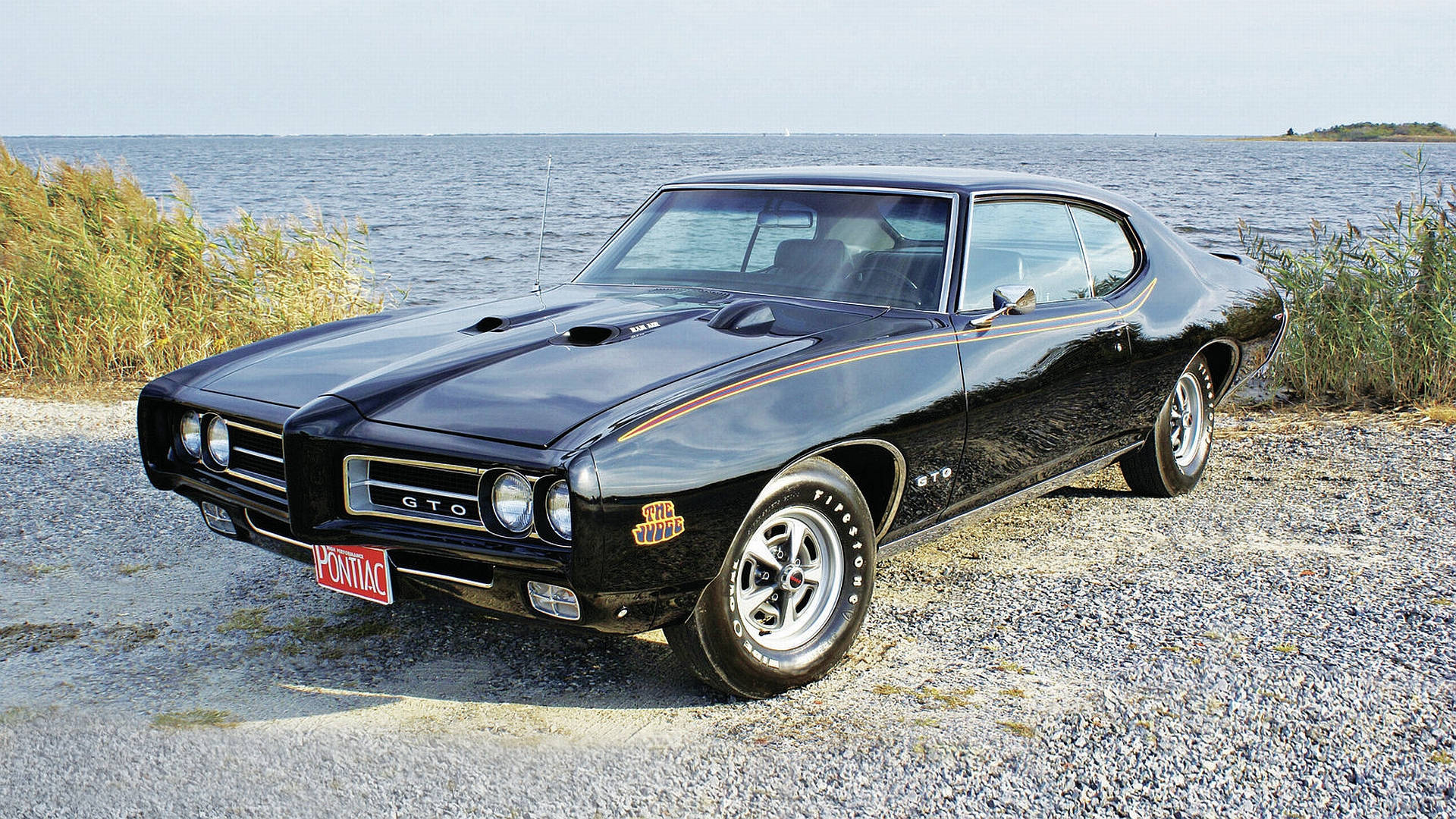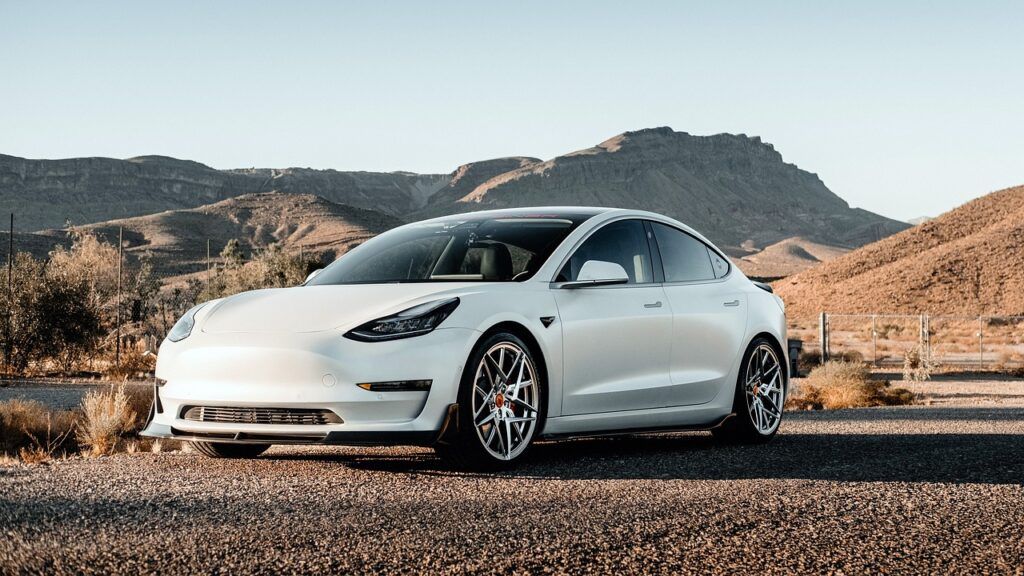
Remember cruising down the street in 1985? The air was filled with the sounds of Madonna or Bruce Springsteen blasting from the radio, your hands firmly gripping the steering wheel of what felt like just an ordinary car. Back then, these vehicles were simply a part of daily life, ferrying families to school, commutes to work, and friends to their weekend adventures. They were ubiquitous, the unsung heroes of suburban driveways and bustling city streets.
Fast forward to today, and those seemingly common rides from the Reagan era have undergone a remarkable transformation. What was once an everyday mode of transport has now evolved into a collection of genuinely sought-after classics. Car enthusiasts across the nation swoon over these machines, appreciating their design, their story, and the unmistakable slice of mid-80s Americana they represent.
Whether you had the joy of owning one of these automotive legends yourself or spent countless hours riding shotgun in a friend’s, these 11 vehicles were the undisputed kings and queens of American roads during the mid-80s. They shaped our driving experiences and left an indelible mark on pop culture. Today, they don’t just command respect; they tell a story, making a statement at car shows and in the hearts of collectors nationwide. Let’s take a nostalgic journey back to 1985 and rediscover the charm of these now-classic rides.
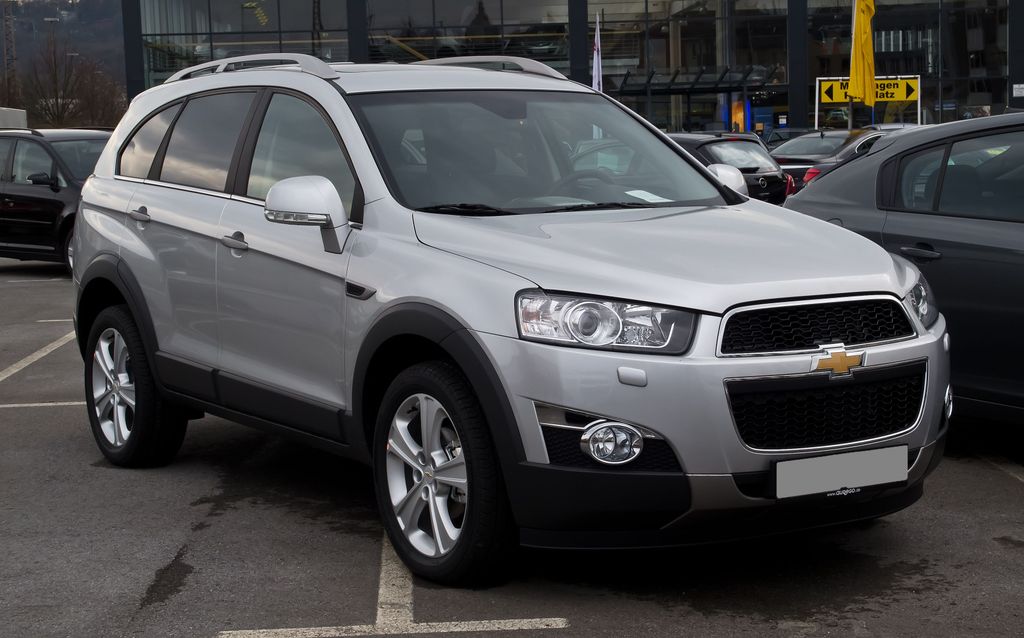
1. **Chevrolet Cavalier: The Everyday Hero**The Chevrolet Cavalier was, without a doubt, the embodiment of affordable reliability in 1985, making it a truly ubiquitous presence on American roads. General Motors managed to sell these compact cars in staggering numbers, solidifying their status as a common fixture in everything from suburban driveways to the bustling parking lots of high schools across the country. It was the dependable choice for countless drivers.
The Cavalier’s widespread appeal also stemmed from its impressive versatility, offering budget-conscious buyers a wealth of options. You could find it in various practical body styles, including a sleek coupe, a family-friendly sedan, a spacious wagon, and for those seeking a bit more flair, even a convertible. This range ensured that there was a Cavalier perfectly suited for almost any need, making it a cornerstone of automotive practicality for its time. Its straightforward design and simple mechanics were also a huge plus, ensuring that any necessary repairs rarely, if ever, broke the bank, further cementing its reputation as an economical and sensible choice for the average American consumer.
Today, the first-generation Cavaliers, produced between 1982 and 1987, are unexpectedly enjoying a growing following among collectors. This is especially true for the sportier Z24 models, which stood out with their distinctive hood bulges and sleek, blacked-out trim, adding a touch of aggression to an otherwise modest vehicle. Discovering a well-preserved example of one of these Cavaliers now feels like unearthing a genuine time capsule, offering a tangible link back to a simpler and more straightforward era of automotive history, a period many enthusiasts fondly look back upon.
Car Model Information: 2005 Chevrolet Cavalier Base
Name: Chevrolet Cavalier
Manufacturer: Chevrolet
Production: 1981–2005,2016–2021 (China)
ModelYears: 1982–2005,2016–2021 (China),2019–2025 (Mexico)
Class: Compact car
Predecessor: Chevrolet Monza
Successor: Chevrolet Cobalt
Platform: GM J platform
Layout: Front-engine, front-wheel-drive
Categories: 1990s cars, 2000s cars, 2010s cars, All Wikipedia articles needing clarification, All accuracy disputes
Summary: The Chevrolet Cavalier is a line of compact cars produced by Chevrolet. Serving as the replacement of the Chevrolet Monza, the Cavalier was the second Chevrolet model line to adopt front-wheel drive. Three versions of the Cavalier have been sold, including three generations sold in North America from model years 1982 to 2005, a version produced by SAIC-GM for China from 2016 to 2021, and a SAIC-GM version produced for Mexico since the 2019 model year.
The Cavalier was among the inaugural vehicles of the GM J platform. One of the first “world cars” of General Motors, the J platform was developed for use by each North American GM division (with the exception of GMC), alongside international models for Opel, Vauxhall, and Holden. Though sharing chassis underpinnings, J-body cars from Europe and Australia used slightly different body designs and different powertrains; in Europe, the Vauxhall Cavalier and Opel Ascona were marketed as mid-size cars. Initially a divisional counterpart of the Buick Skyhawk, Cadillac Cimarron, Oldsmobile Firenza, and Pontiac J2000, the Cavalier was primarily marketed alongside the Pontiac Sunbird (renamed the Pontiac Sunfire for 1995).
The 1982–2005 Cavalier was produced by multiple GM facilities across North America; all models from the 1990s on were made at Lordstown Assembly, which became synonymous with the Cavalier and compact Chevrolet models in general from the earlier Chevrolet Vega all the way to the Chevrolet Cruze. For 2005, the Chevrolet Cobalt replaced the model line in North America.
Get more information about: Chevrolet Cavalier
Buying a high-performing used car >>>
Brand: Chevrolet Model: Cavalier
Price: $3,987 Mileage: 159,599 mi.
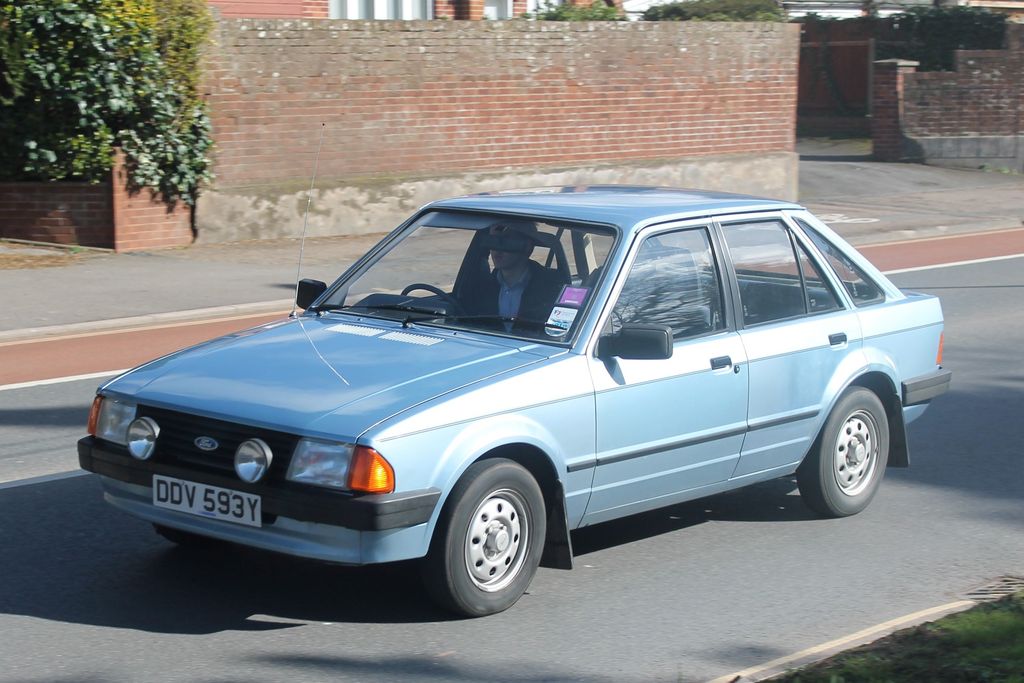
2. **Ford Escort: America’s Fuel-Sipping Favorite**In the mid-80s, rising gas prices were on everyone’s mind, driving a widespread shift towards more economically sensible transportation choices. Ford’s Escort stepped up to the plate, perfectly answering this call with its impressive fuel efficiency and compact design. It delivered exactly what drivers needed, all while sporting that distinctive, boxy styling that has now become instantly recognizable as quintessentially 80s, a design aesthetic that truly defined an era on American roads.
The Escort was designed with versatility in mind, catering to a diverse range of drivers, from busy families to single commuters. Ford made sure to offer it in several practical configurations: as a convenient hatchback, a traditional sedan, or a spacious wagon, ensuring that there was an Escort model to fit almost any lifestyle requirement. For those who desired a bit more spirit in their drive, the GT trim provided an exciting upgrade; it featured a fuel-injected 1.9L engine that, while perhaps not earth-shattering by today’s performance standards, was certainly considered quite zippy and engaging for its time, adding a welcome dash of excitement to the everyday commute.
Nowadays, finding clean examples of the Ford Escort has become an increasingly rare and remarkable discovery. The unfortunate reality of their tendency to rust, combined with their original disposable nature as an economical mode of transport, meant that many of these vehicles were simply scrapped long ago, rather than being lovingly maintained. Because of this, any surviving Escorts are now truly genuine artifacts, offering a precious glimpse into the vibrant American car culture of the 1980s and serving as a testament to the era’s automotive landscape. They’ve become prized possessions for those who appreciate their historical significance.
Car Model Information: 1986 Ford Escort GT 2-Door
Name: Ford Escort
Caption: Ford Escort RS2000 Mark I
Manufacturer: Ford of Europe
Production: January 1968–2004
Class: Compact car
Layout: Front-engine, rear-wheel-drive layout
Related: Ford Orion
Predecessor: Ford Anglia
Successor: Ford Focus,Ford Laser
Categories: 1970s cars, 1980s cars, 1990s cars, 2000s cars, All articles with unsourced statements
Summary: The Ford Escort is a small family car that was manufactured by Ford of Europe from 1968 until 2004. In total there were six generations, spread across three basic platforms: the original, rear-wheel-drive Mk.1/Mk.2 (1968–1980), the “Erika” front-wheel-drive Mk.3/Mk.4 (1980–1992), and the final CE-14 Mk.5/Mk.6 (1990–2002) version. Its successor, the Ford Focus, was released in 1998, but the final generation of Escort was phased out gradually, with the panel van version ending production in 2002 in favour of the Ford Transit Connect.
The Escort was frequently the best selling car in Britain during the 1980s and 1990s. A total of more than 4.1 million Escorts of all generations were sold there over a period of 33 years.
In 2014, Ford revived the Escort name for a car based on the second-generation Ford Focus, sold on the Chinese market.
Get more information about: Ford Escort (Europe)
Buying a high-performing used car >>>
Brand: Ford Model: Escort
Price: $9,500 Mileage: 62,990 mi.
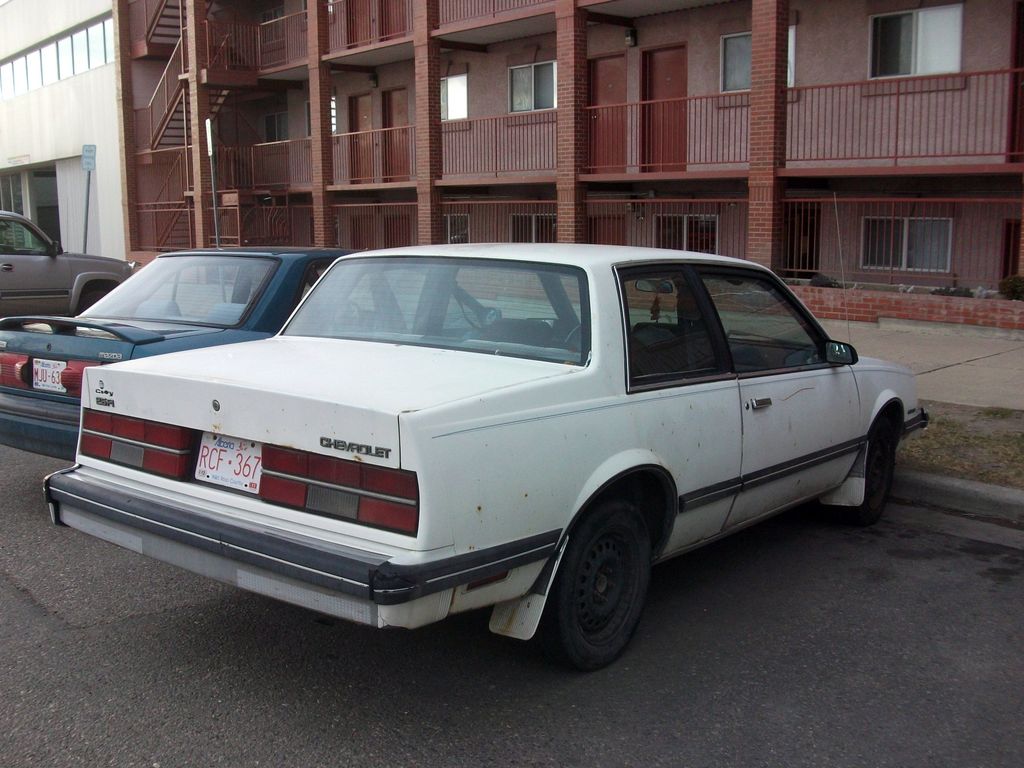
3. **Chevrolet Celebrity: Middle America’s Midsize Marvel**In 1985, if you wanted to perfectly encapsulate the image of a “typical American family car,” nothing quite achieved it with the same effortless precision as the Chevrolet Celebrity. This midsize, front-wheel-drive sedan or wagon wasn’t about flash or high-octane excitement; it was the automotive equivalent of a comforting meal – not necessarily thrilling, but consistently satisfying, reliable, and utterly dependable in every sense of the word. It simply got the job done, day in and day out.
The Celebrity was engineered with everyday family life in mind, boasting spacious interiors that made it an absolute dream for those classic American road trips, comfortably accommodating everyone and everything. While its primary focus was practicality, the Eurosport trim offered a welcome injection of visual flair, distinguishing itself with sleek, blacked-out trim accents and sportier wheels. These cars were true workhorses, built to last and often racking up incredibly impressive mileage figures before their owners ever considered trading them in, a testament to their robust construction and enduring reliability.
Catching a glimpse of a Chevrolet Celebrity on the road today instantly floods you with a wave of nostalgia, conjuring images of a bygone era. Their distinctive squared-off design, often complemented by gleaming chrome details, represents the absolute pinnacle of 80s automotive styling, a look that is both timeless and deeply evocative of the period. Well-maintained examples of the Celebrity are quickly becoming highly coveted by collectors who genuinely appreciate their honest, unpretentious character and their significant role in the fabric of American automotive history, celebrating a car that was truly built for the people.
Car Model Information: 1956 Chevrolet 3100
Name: Chevrolet Celebrity
Caption: 1986 Chevrolet Celebrity 4-door sedan
Manufacturer: Chevrolet
Production: 1981–1990
ModelYears: 1982–1990
Class: Mid-size
Platform: GM A platform (FWD)
BodyStyle: coupe
Engine: ubl
Transmission: Turbo-Hydramatic 125#Turbo-Hydramatic 125,automatic transmission
Assembly: Oshawa, Ontario
Length: 188.3 in
Abbr: on
Width: 69.2 in
Height: 54.2 in
Layout: Front-engine, front-wheel-drive layout
Wheelbase: 104.8 in
Predecessor: Chevrolet Malibu
Successor: Chevrolet Lumina,Chevrolet Lumina APV
Related: Buick Century#Fifth generation (1982–1996),Oldsmobile Cutlass Ciera,Pontiac 6000
Categories: 1980s cars, 1990s cars, All articles with unsourced statements, Articles with short description, Articles with unsourced statements from December 2010
Summary: The Chevrolet Celebrity is a front-drive, mid-size passenger car line, manufactured and marketed by Chevrolet for model years 1982–1990, over a single generation.
Marking the transition of the mid-size Chevrolet range to front-wheel drive, the Celebrity succeeded the rear-drive Chevrolet Malibu line. Initially marketed between the Citation and the Impala within the Chevrolet model line, the Celebrity was later marketed between the Corsica and Caprice sedans.
The Celebrity shared the front-wheel drive GM A platform with the Buick Century, Oldsmobile Cutlass Ciera, and Pontiac 6000 in two-door notchback coupe, four-door sedan, and five-door station wagon body styles.
After the 1989 model year, the Celebrity sedan was replaced by the Chevrolet Lumina; the Celebrity station wagon was discontinued after 1990, with the Chevrolet Lumina APV minivan serving as its replacement.
The Celebrity and its A-body counterparts became widely known as one of the most transparent examples of corporate product rebadging in the American automotive industry. The four model lines were highlighted on the August 22, 1983 cover of Fortune as examples of genericized uniformity. Hemmings Motor News would later cover the effect of the Fortune article, relating “how a single magazine cover photo changed the course of auto design at GM in the Eighties.” Embarrassed by the incident, GM subsequently recommitted to development of divisional brand identity.
Get more information about: Chevrolet Celebrity
Buying a high-performing used car >>>
Brand: Chevrolet Model: Celebrity
Price: $89,950 Mileage: 190 mi.
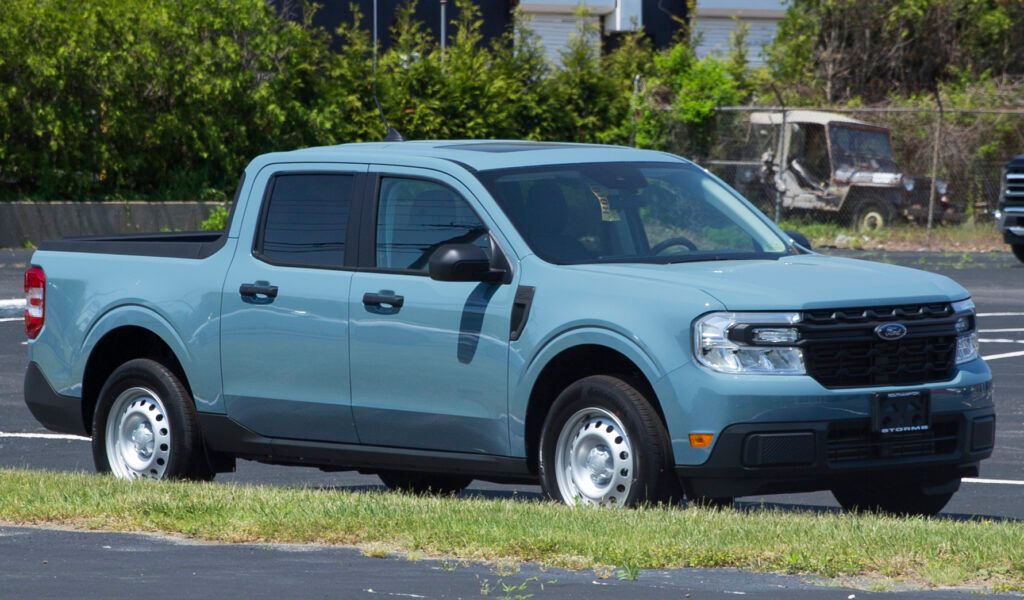
4. **Ford Tempo: The Office Worker’s Chariot**The Ford Tempo arrived on the scene with a clear and focused mission: to provide reliable transportation that was utterly devoid of unnecessary flash or drama. These compact sedans and coupes were designed to be the backbone of daily commutes, faithfully filling office parking lots across America, offering practical, no-nonsense transportation at an incredibly reasonable and accessible price point. It was the sensible choice for countless professionals and families alike.
Demonstrating Ford’s forward-thinking commitment to modernizing their vehicle lineup, the Tempo was available with both front-wheel drive and, notably, all-wheel drive, a feature that was quite advanced for its time and offered added traction and stability. Furthermore, for those who desired a taste of cutting-edge technology, the digital dashboard option was a true marvel in 1985. It provided drivers with an exciting glimpse into the future of automotive design, transforming the cabin into a futuristic command center that truly stood out among its contemporaries.
Surviving Ford Tempos today often showcase that distinctly peculiar shade of metallic blue or silver that was so prevalent during the mid-80s, colors that instantly transport you back in time. Despite their utilitarian origins, their clean, angular styling has surprisingly aged remarkably well, often looking more cohesive and intentional than some of their more overtly styled contemporaries. Discovering a Tempo with genuinely low miles is like unearthing a personal time machine, ready to whisk you right back to an era defined by big hair, power suits, and the unmistakable energy of the 1980s, offering a unique and authentic piece of automotive history.
Car Model Information: 1994 Ford Tempo GL
Name: Ford Tempo
Aka: Ford Ghia,Ford Topaz,Mercury Topaz
Manufacturer: Ford Motor Company
Production: 1983–1994
ModelYears: 1984–1994
Class: Compact car
Layout: Front-engine, front-wheel-drive layout,Front-engine, four-wheel-drive layout
Designer: Jack Telnack
Assembly: Claycomo, Missouri,Oakville, Ontario,Cuautitlán Izcalli
Predecessor: Ford Fairmont
Successor: Ford Mondeo (first generation)#Ford Contour and Mercury Mystique
Caption: 1992-1994 Ford Tempo
Categories: 1990s cars, All-wheel-drive vehicles, Articles with short description, CS1 Spanish-language sources (es), CS1 maint: ignored ISBN errors
Summary: The Ford Tempo is a front-engine, front-drive, five passenger, two- or four-door sedan manufactured and marketed by Ford for model years 1984-1994, over a single generation. The successor of the Ford Fairmont, the Tempo marked both the downsizing of the Ford compact car line and its adoption of front-wheel drive. Through its production, the model line was offered as a two-door coupe and four-door sedan, with the Mercury Topaz marketed as its divisional counterpart (no Lincoln version was sold).
Deriving its chassis underpinnings and powertrain from the Ford Escort, the Tempo was the first aerodynamically styled sedan introduced by Ford. First seen on the 1982 Ford Sierra hatchbacks (designed by Ford of Europe) and the 1983 Ford Thunderbird coupe, the model line was followed by the 1986 Ford Taurus.
Produced across multiple facilities in North America, the Tempo/Topaz was produced in a single generation of two-doors; two generations of four-door sedans were produced. For the 1995 model year, the Tempo/Topaz four-door sedan was replaced by the Ford Contour (and Mercury Mystique), developed from the Ford Mondeo; the two-door Tempo was not directly replaced.
Get more information about: Ford Tempo
Buying a high-performing used car >>>
Brand: Ford Model: Tempo
Price: $6,944 Mileage: 80,369 mi.
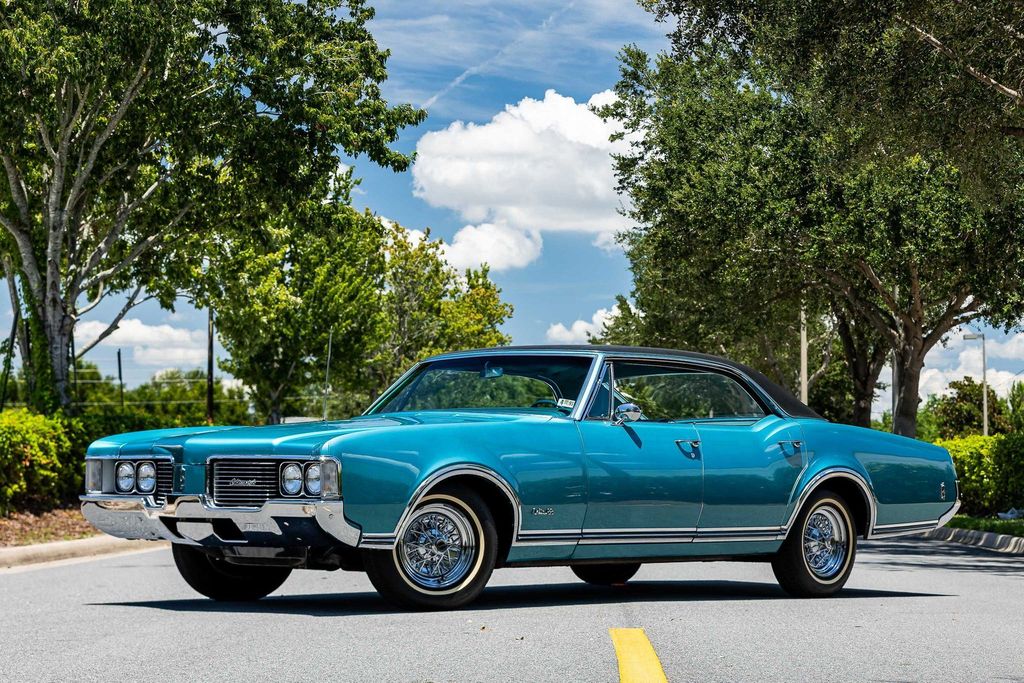
5. **Oldsmobile Ciera: Upscale Comfort for the Masses**The Oldsmobile Ciera masterfully blended a sense of luxury with an accessible price point, positioning itself as a sophisticated yet attainable option for the middle class. Inside, the plush velour upholstery, combined with elegant wood-grain trim, made the cabin feel remarkably opulent, instantly elevating the driving experience to something akin to a luxury car. As a sibling to the Chevrolet Celebrity, sharing the robust GM A-body platform, the Ciera consistently delivered Oldsmobile’s traditional and much-loved touches of class and unparalleled comfort, setting it apart in its segment.
Driving the Ciera was an experience characterized by refined serenity. Its soft suspension was expertly tuned to effortlessly soak up road imperfections, providing an incredibly smooth and cushioned ride, while the meticulously engineered quiet cabin effectively insulated passengers from the hustle and bustle of the outside world. For those seeking even more indulgence, the Brougham models truly took the luxury up another notch, featuring extra chrome trim and even plusher interiors that exuded an air of understated elegance and premium comfort, appealing to discerning buyers.
These cars were more than just vehicles; they were ubiquitous fixtures in the driveways of successful professionals, from insurance agents to middle managers, symbolizing a certain level of achievement and refinement. Today, a well-maintained Oldsmobile Ciera represents an inviting and surprisingly affordable entry point into classic car ownership. Their distinctive formal roofline, combined with the rich heritage of the Oldsmobile brand, makes them increasingly desirable and collectible for enthusiasts who appreciate a blend of comfort, style, and a touch of automotive history that stands the test of time.
Car Model Information: 1994 Oldsmobile Cutlass Ciera S
Name: Oldsmobile Cutlass Ciera
Aka: Oldsmobile Ciera (1996),Oldsmobile Cutlass (Ciera) Cruiser,Cutlass by General Motors (Mexico)
Manufacturer: Oldsmobile
Production: September 1981–August 1996
ModelYears: 1982–1996 (Ciera),1984–1996 (Cruiser)
Class: Mid-size
Assembly: Oklahoma City, Oklahoma,Framingham, Massachusetts,Doraville, Georgia,Sainte-Thérèse, Quebec,Fremont, California,Ramos Arizpe,Oshawa, Ontario
Layout: Front-engine, front-wheel-drive layout
Platform: GM A platform (FWD)
BodyStyle: coupe,sedan (car),station wagon
Successor: Oldsmobile Cutlass#Sixth generation (1997)
Related: Buick Century#Fifth,Chevrolet Celebrity,Pontiac 6000
Wheelbase: 104.9 in
Abbr: on
Length: 190.3 in
Width: 69.5 in
Height: 54.1 in
Transmission: Turbo-Hydramatic 125,Turbo-Hydramatic 125#Turbo-Hydramatic 440-T4,GM 4T60 transmission
Engine: GM 122 engine#2200 OHV,GM Iron Duke engine#Tech IV,GM 60-Degree V6 engine#LE2,GM 60-Degree V6 engine#Generation II,Buick V6 engine#LK9,GM 60-Degree V6 engine#Generation II,Buick V6 engine#LG7,Buick V6 engine#LG3,Oldsmobile Diesel V6 engine#LT7
Predecessor: Oldsmobile Cutlass#Fifth generation (1978)
Categories: 1980s cars, 1990s cars, All Wikipedia articles written in American English, Articles with short description, Cars discontinued in 1996
Summary: The Oldsmobile Cutlass Ciera is a mid-size car manufactured and marketed for model years 1982–1996 by the Oldsmobile Division of General Motors — over a single generation. Body styles included a 2-door coupe, 4-door sedan, and the 4-door wagon.
The Cutlass Ciera shared the front-wheel drive A platform with the Buick Century, Pontiac 6000 and Chevrolet Celebrity.
Get more information about: Oldsmobile Cutlass Ciera
Buying a high-performing used car >>>
Brand: Oldsmobile Model: Ciera
Price: Not Priced Mileage: 128,626 mi.

6. **Chevrolet Caprice: King of the American Road**Before the era of widespread downsizing truly took hold, full-sized American luxury reigned supreme on the highways, and the Chevrolet Caprice was its undisputed monarch. These massive sedans and wagons embodied the very essence of traditional American automotive design, projecting an imposing presence while offering unparalleled comfort and a distinctive, stately grandeur that commanded attention wherever they went. They were the epitome of spaciousness and road presence, a truly iconic symbol of the era.
Underneath the hood, the Caprice offered a choice of robust V6 or V8 engines, with the highly regarded 5.0-liter V8 providing an exceptionally smooth, effortless, and powerful acceleration that made highway cruising an absolute delight. The cars boasted cavernous trunks, capable of swallowing multiple golf clubs, weeks’ worth of groceries, and still having room to spare, highlighting their immense practicality. Inside, the spacious bench seats were designed to comfortably accommodate six adults, making long journeys a relaxed and enjoyable experience for everyone on board, truly prioritizing passenger comfort.
Among the various configurations, the station wagon versions of the Caprice, especially those adorned with the classic wood-grain sides, have become particularly sought-after and collectible in today’s market. Their unique combination of immense utility and deep-seated nostalgia makes them undeniable stars at car shows, drawing crowds of admirers. Meanwhile, the sedan variants offer an incredibly affordable entry point into classic V8 ownership for enthusiasts who deeply appreciate Detroit’s last truly great full-sized, rear-wheel-drive platforms, cherishing a piece of American automotive heritage that proudly harks back to an era of grandeur and unrestrained design.
Now that we’ve cruised through the first half of our epic 1985 automotive lineup, buckle up! We’re diving into the remaining legends that cemented their place in American car culture, exploring their unique contributions, enduring legacies, and how they’ve captivated a new generation of collectors. Get ready to feel that wave of nostalgia all over again as we celebrate these fantastic machines!
Car Model Information: 1996 Chevrolet Caprice Classic
Name: Chevrolet Caprice
Caption: Chevrolet Caprice PPV
Manufacturer: unbulleted list
Production: unbulleted list
ModelYears: unbulleted list
Predecessor: unbulleted list
Class: Full-size car
Platform: unbulleted list
Layout: FR layout
Categories: 1970s cars, 1980s cars, 1990s cars, 2000s cars, 2010s cars
Summary: The Chevrolet Caprice is a full-size car produced by Chevrolet in North America for the 1965 through 1996 model years. Full-size Chevrolet sales peaked in 1965, with over a million units sold. It was the most popular car in the U.S. in the 1960s and early 1970s, which, during its production, included the Biscayne, Bel Air, and Impala.
Introduced in mid-1965 as a luxury trim package for the Impala four-door hardtop, Chevrolet offered a full line of Caprice models for the 1966 and subsequent model years, including a “formal hardtop” coupe and an Estate station wagon. The 1971 through 1976 models are the largest Chevrolets built. The downsized 1977 and restyled 1991 models were awarded Motor Trend Car of the Year. Production ended in 1996.
From 2011 until 2017, the Caprice nameplate returned to North America as a full-size, rear wheel drive police vehicle, a captive import from Australia, built by General Motors’s subsidiary Holden. The police vehicle is a rebadged version of the Holden WM/WN Caprice. The nameplate also had a civilian and police presence in the Middle East from 1999 until 2017, where the imported Holden Statesman/Caprice built by Holden was marketed as the Chevrolet Caprice in markets such as Saudi Arabia and the UAE.
Get more information about: Chevrolet Caprice
Buying a high-performing used car >>>
Brand: Chevrolet Model: Caprice
Price: $34,691 Mileage: 35,241 mi.
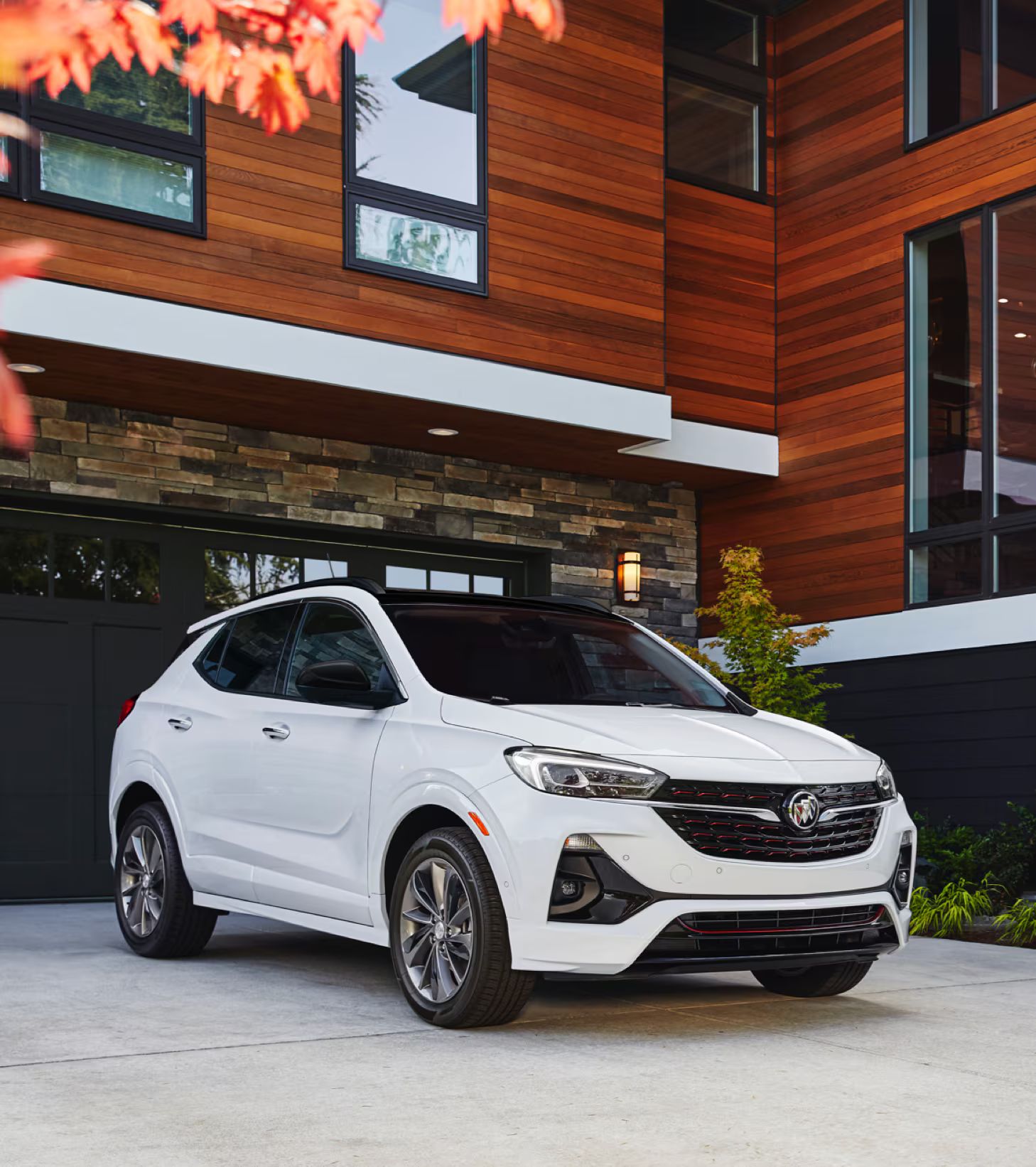
7. **Buick Century: The Professional’s Choice**For the aspiring professional of 1985—think doctors, lawyers, and meticulous accountants—the Buick Century was the ultimate status symbol that didn’t scream for attention. It masterfully struck a balance between undeniable professionalism and a refined restraint, making it more than just a car; it was a subtle statement of success and discerning taste. It fit perfectly into the lives of those who valued quality and comfort above ostentation, serving as Buick’s distinct take on the versatile GM A-body platform, infused with their signature touches of chrome and comfort.
Stepping inside the Century was an experience in quiet luxury. You were greeted by plush seating, often in rich velour, and an elegantly designed dashboard that made every journey a pleasure. The ride itself was pure Buick: smooth, quiet, and incredibly comfortable, effectively insulating occupants from the daily grind and making long trips a breeze. For those desiring an extra layer of sophistication, the Limited models were true standouts, offering luxurious leather options and power features that truly elevated the sense of indulgence, ensuring owners felt pampered without ever appearing ostentatious.
Today, the Buick Century’s timeless design, particularly its distinctive formal roofline and clean styling, has aged with remarkable grace, maintaining an air of classic sophistication that still captivates onlookers. Well-preserved examples, especially the sought-after T-Type performance models, have cultivated a dedicated following among collectors. These enthusiasts genuinely appreciate the Century’s unique blend of plush comfort, understated elegance, and its significant role in representing a generation of discerning American drivers who sought quality and quiet confidence in their automotive choices.
Car Model Information: 2001 Buick Century Custom
Name: Buick Century
Manufacturer: Buick
ModelYears: 1936–1942,1954–1958,1973–2005
Class: Full-size car,Mid-size car
BodyStyle: coupe,sedan (car),station wagon
Layout: FR layout,Front-engine, front-wheel-drive layout
Predecessor: Buick Master Six
Successor: Buick LaCrosse,Buick Regal#Regal TourX
Categories: 1930s cars, 1940s cars, 1950s cars, 1970s cars, 1980s cars
Summary: Buick Century is the model name that was used by Buick for a line of upscale full-size cars from 1936 to 1942 and 1954 to 1958, as well as from 1973 to 2005 for mid-size cars.
The first Buick Century debuted as the Series 60 then renamed in 1936 as a shorter and lighter model featuring the same engine as the bigger Roadmaster and Limited series giving it more performance while using the shorter wheelbase body of the Buick Special. During the 1930s and 1940s it was Buick’s companion to the top level Roadmaster and was offered as a 2-door and 4-door sedan and convertible. The Century name was used on six generations of cars of varying sizes as well as performance and trim levels. In 1969, Buick developed a concept car known as the Century Cruiser. In the 1970s, the Century Regal became a separate model and market positioning between the two products changed from year to year depending on sales. The Century was updated to front wheel drive in 1982 and was Buick’s 2-door coupe, 4-door sedan and station wagon, with regular updates and feature upgrades as customer preferences changed over time.
Get more information about: Buick Century
Buying a high-performing used car >>>
Brand: Buick Model: Century
Price: Not Priced Mileage: 0 mi.
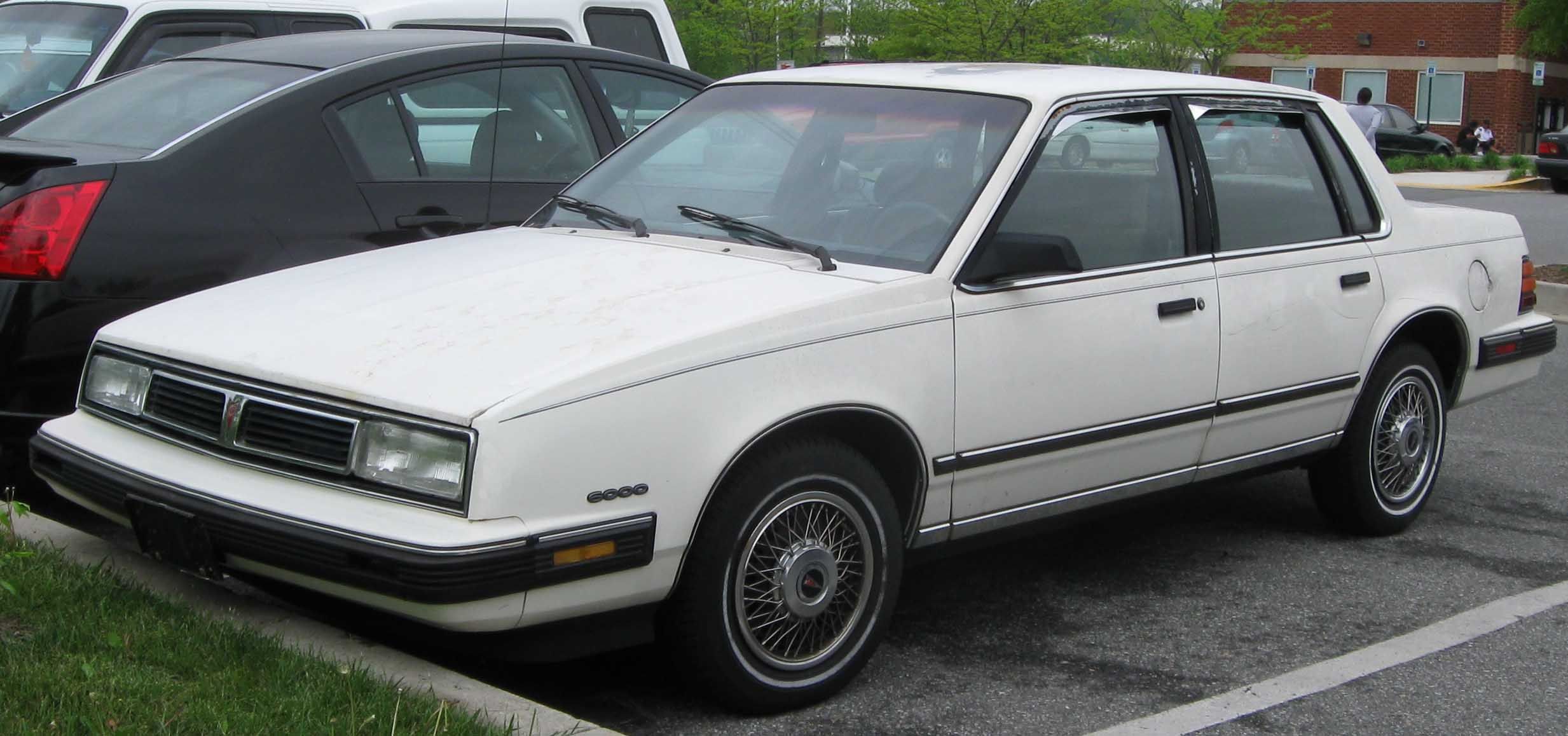
8. **Pontiac 6000: The Sporty Executive Express**If you craved a family car in 1985 but secretly yearned for something with a bit more zest and personality, the Pontiac 6000 was your answer. Pontiac, known for infusing a healthy dose of sportiness into its vehicles, gave its version of the GM A-body platform a distinct attitude. The 6000, available as both a sedan and a wagon, brought an unexpected thrill to the everyday commute, thanks to its more aggressive styling and a fantastic array of performance-oriented options that truly set it apart from its sensible siblings.
The real showstopper, though, was the STE – the Special Touring Edition. This wasn’t just a trim package; it transformed the unassuming 6000 into a genuine sports sedan, ready to tackle winding roads with gusto. It boasted an upgraded suspension for sharper handling, sleek blackout trim for a more aggressive stance, and distinctive alloy wheels that practically screamed ‘performance.’ Inside, the STE delivered a truly driver-focused cockpit, complete with sporty bucket seats and a console shifter that made every gear change feel engaging.
For today’s collectors, discovering a Pontiac 6000 STE in good condition is like unearthing a rare treasure. These cars perfectly embody Pontiac’s unwavering commitment to blending performance with practicality, even within family-focused vehicles. Their advanced features for the era, such as cutting-edge digital dashboards and other high-tech options, make them incredibly fascinating time capsules, offering a vivid glimpse into the exciting world of 1980s automotive technology and design.
Car Model Information: 2004 Pontiac Vibe Base
Caption: 1987–1988 Pontiac 6000 LE
Name: Pontiac 6000
Transmission: Turbo-Hydramatic 125#Turbo-Hydramatic 125,automatic transmission
Manufacturer: Pontiac (automobile)
Production: 1981–1991
ModelYears: 1982–1991
Class: Mid-size
Layout: Front-engine, front-wheel-drive layout
Platform: GM A platform (FWD)
BodyStyle: coupe
Predecessor: Pontiac LeMans
Successor: Pontiac Grand Prix#Sixth generation (1988–1996)
Length: 188.9 in
Abbr: on (1989–1991)
Width: 72 in
Height: 53.7 in
Wheelbase: 104.5 in
Assembly: Oklahoma City Assembly,United States
Related: Buick Century#Fifth generation (1982–1996),Chevrolet Celebrity,Oldsmobile Cutlass Ciera
Engine: Iron Duke engine#Tech IV,General Motors 60° V6 engine#LE2,General Motors 60° V6 engine,Oldsmobile Diesel engine#LT7
Categories: 1990s cars, All-wheel-drive vehicles, All articles with unsourced statements, Articles with short description, Articles with unsourced statements from May 2019
Summary: The Pontiac 6000 is a mid-size automobile manufactured and marketed by Pontiac from the 1982 to 1991 model years. As Pontiac transitioned to a numeric model nomenclature in the early 1980s, the 6000 replaced the LeMans as the mid-size Pontiac, slotted between the Phoenix (later the Grand Am) and the Bonneville. Through its production life, the 6000 was offered as a two-door and four-door notchback sedan and as a five-door station wagon.
The model line utilized the front-wheel drive GM A platform. Sharing a platform with the Buick Century, Chevrolet Celebrity (replacing the Malibu), and Oldsmobile Cutlass Ciera (replacing the Cutlass Supreme sedan), the 6000 shared its roofline with the Cutlass Ciera. The 6000 STE was a sport-tuned model unique to Pontiac; the STE was named to the Car and Driver Ten Best three times (from 1983 to 1985). Following the discontinuation of its full-size namesake, the 6000 Safari was the final Pontiac to use the nameplate, becoming the final Pontiac station wagon in 1991.
For 1984, the 6000 became the highest-selling Pontiac line (with over 122,000 sold). As part of their legacy, together the 6000 and the other A-bodies became enormously popular — as well as synonymous with GM’s most transparent examples of badge engineering, highlighted almost indistinguishably on the August 22, 1983 cover of Fortune magazine as examples of genericized uniformity, embarrassing the company and ultimately prompting GM to recommit to design leadership.
The 6000 was manufactured by GM at Oshawa Car Assembly (Oshawa, Ontario) from 1981 to 1988; subsequently, it was manufactured at Oklahoma City Assembly (Oklahoma City, Oklahoma). The 6000 was replaced for 1992 as Pontiac fully phased in the four-door sedan version of the Grand Prix (introduced in 1990) as a successor.
Get more information about: Pontiac 6000
Buying a high-performing used car >>>
Brand: Pontiac Model: 6000
Price: $4,999 Mileage: 136,159 mi.
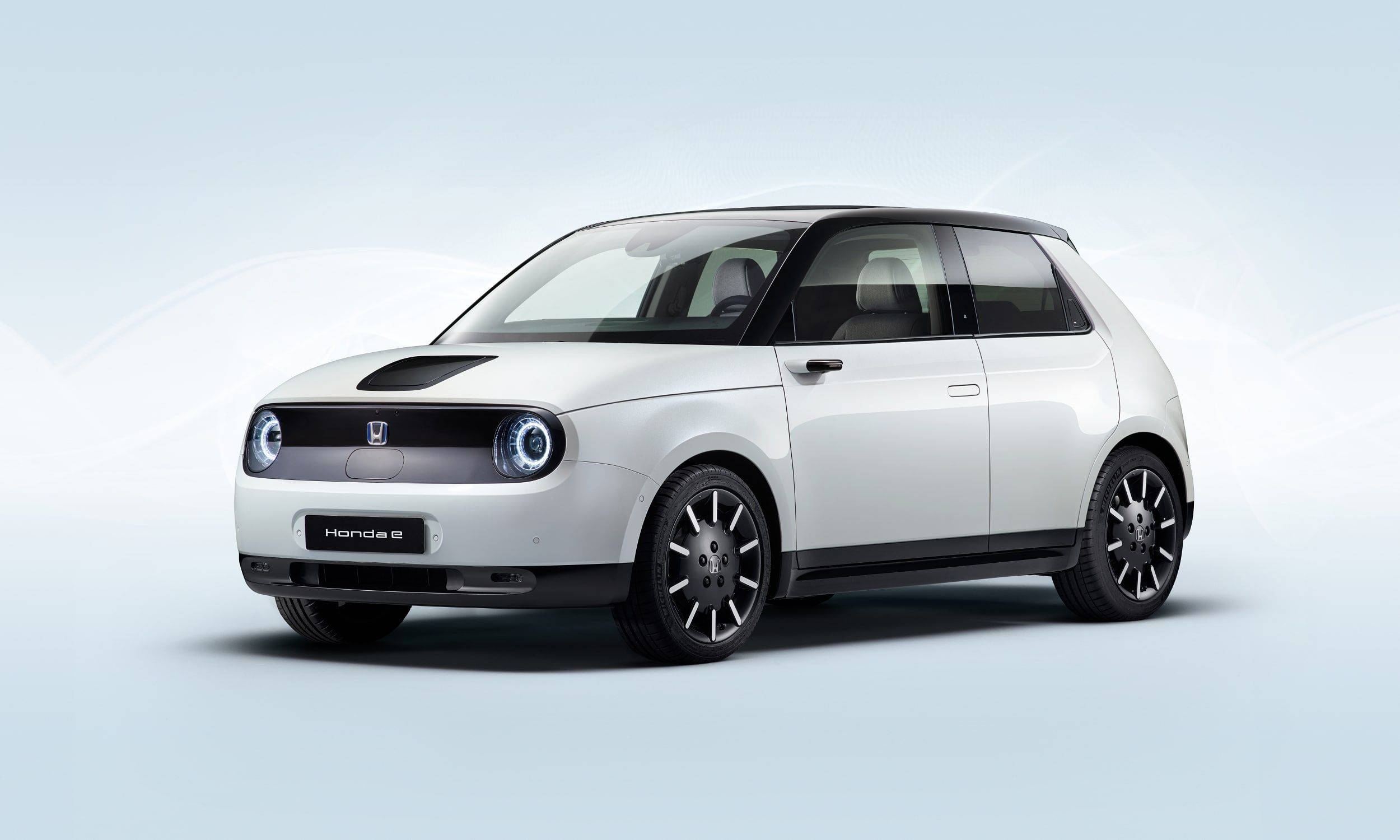
9. **Honda Accord: Japan’s Quality Revolution**While American manufacturers held court on sales figures in 1985, a quiet revolution was steadily gaining traction across the nation, driven by the Honda Accord. This Japanese import was winning converts left and right, thanks to its simply incredible build quality and an almost legendary reputation for reliability that was practically unheard of at the time. The second-generation Accord, with its clean, understated styling and stellar fuel efficiency, quickly emerged as a seriously smart and attractive alternative to the domestic offerings.
Beyond its reputation for dependability, the Accord was remarkably versatile and genuinely fun to drive. You could find it in practical body styles like a comfortable sedan or a convenient hatchback, and for those in the know, there was even the rare and super cool Aerodeck shooting brake! Whether it was the precise manual shifter or its responsive handling, the Accord managed to make even the most mundane daily commute feel like an enjoyable mini-adventure. It truly delivered driving enjoyment alongside utterly practical transportation, a winning combination.
It’s no exaggeration to say that these particular Accords were instrumental in establishing Honda’s stellar reputation here in America, paving the way for decades of success. Finding an unmolested example today is a real challenge, a testament to their longevity—most were driven for hundreds of thousands of miles before finally retiring. Survivors now command surprising prices among collectors who deeply appreciate their historical significance, recognizing how these cars fundamentally changed American car-buying habits forever.
Car Model Information: 2022 Honda Accord Sport 1.5T
Name: Honda Accord
Caption: 2023 Honda Accord LX (US)
Alt: Front three-quarter view of a front-engined four-door car.
Manufacturer: Honda
Production: 1976–present
Class: Compact car
BodyStyle: hatchback
Layout: Front-engine, front-wheel-drive layout
Predecessor: Honda 1300
Categories: 1980s cars, 1990s cars, 2000s cars, 2010s cars, 2020s cars
Summary: The Honda Accord (Japanese: ホンダ・アコード, Hepburn: Honda Akōdo; ), also known as the Honda Inspire (Japanese: ホンダ・インスパイア, Hepburn: Honda Insupaia) in Japan and China for certain generations, is a series of automobiles manufactured by Honda since 1976, best known for its four-door sedan variant, which has been one of the best-selling cars in the United States since 1989. The Accord nameplate has been applied to a variety of vehicles worldwide, including coupes, station wagons, hatchbacks and a Honda Crosstour crossover.
Get more information about: Honda Accord
Buying a high-performing used car >>>
Brand: Honda Model: Accord
Price: $24,955 Mileage: 40,277 mi.
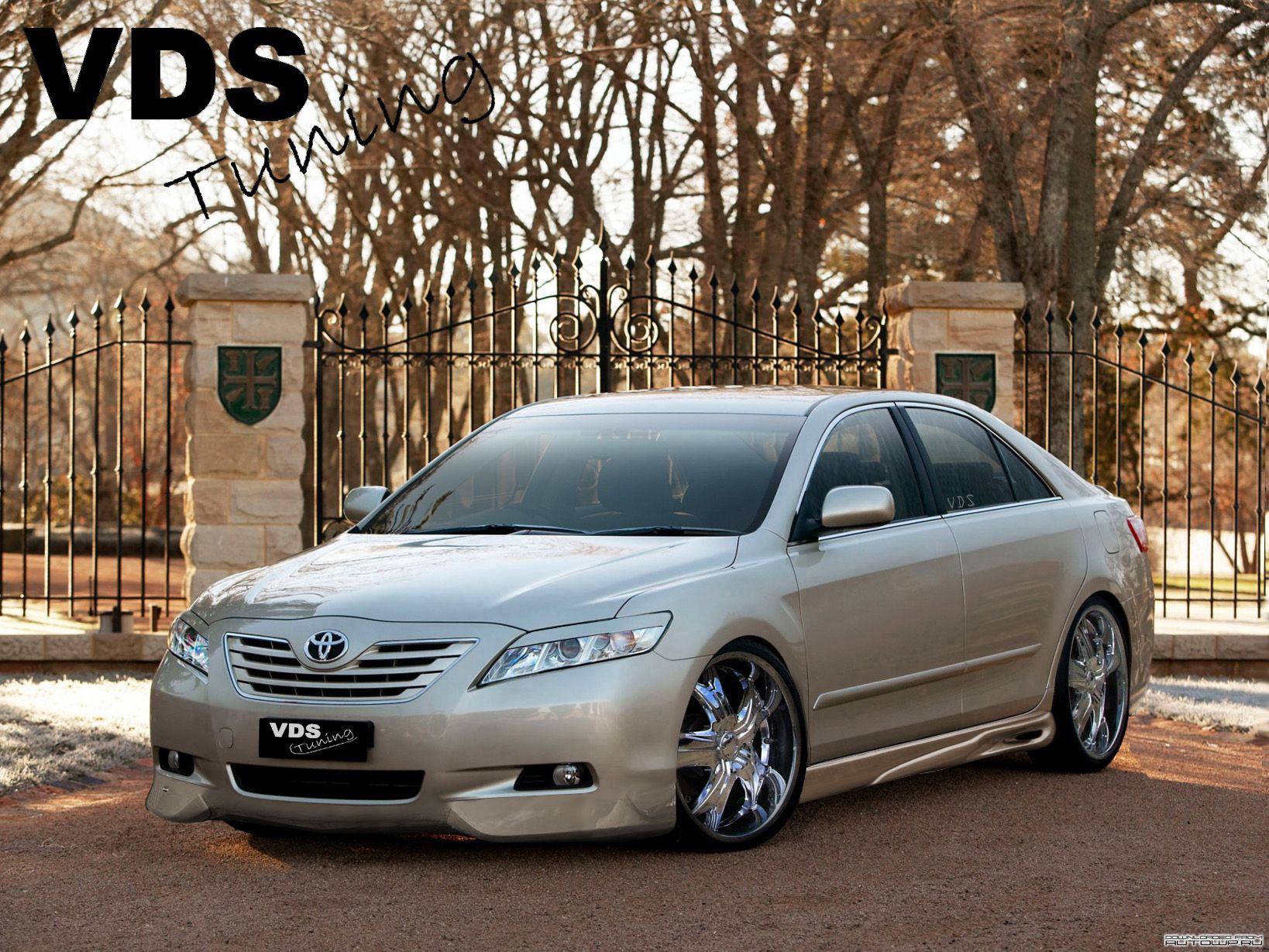
10. **Toyota Camry: The Quiet Revolution**In 1985, Toyota’s midsize contender, the Camry, made its debut with relatively little fanfare. Yet, this unassuming sedan was destined for greatness, eventually becoming America’s bestselling car—a testament to its quiet yet profound impact. The first-generation Camry wasn’t about flash; it was about solid, thoughtful design and a comfortable ride, embodying Toyota’s growing commitment to the American market. It promised reliability and delivered it in spades, slowly but surely winning over an ever-increasing number of drivers.
What truly set the Camry apart was its standard fuel injection—a premium feature for a midsize car in 1985. This advanced technology ensured smooth, utterly reliable performance, making for a refined driving experience that was ahead of its time. Inside, the Camry boasted high-quality materials throughout the cabin, coupled with excellent ergonomics that made the American competitors of the era look somewhat dated by comparison. It was a car designed for everyday life, built to excel with meticulous attention to detail.
Early Camrys, unfortunately, have almost entirely vanished from our roads today, a peculiar irony given their famed durability—they were simply driven until they finally, inevitably, wore out. Because of this, discovering a well-preserved first-generation example now feels akin to unearthing a significant piece of automotive archaeology. These rare survivors represent the humble yet pivotal beginnings of Toyota’s eventual dominance in the midsize sedan market, showcasing a crucial turning point in automotive history.
Car Model Information: 2025 Toyota Camry LE
Name: Toyota Camry
Caption: 2018 Toyota Camry Ascent (ASV70, Australia)
Manufacturer: Toyota
Production: March 1982 – present
Aka: ubl
Class: ubl
Layout: ubl
Predecessor: ubl
Successor: Toyota Avensis (T250)
Categories: 1990s cars, 2000s cars, 2010s cars, 2020s cars, All-wheel-drive vehicles
Summary: The Toyota Camry (; Japanese: トヨタ・カムリ Toyota Kamuri) is an automobile sold internationally by the Japanese auto manufacturer Toyota since 1982, spanning multiple generations. Originally compact in size (narrow-body), the Camry has grown since the 1990s to fit the mid-size classification (wide-body)—although the two widths co-existed in that decade. Since the release of the wide-bodied versions, Camry has been extolled by Toyota as the firm’s second “world car” after the Corolla. As of 2022, the Camry is positioned above the Corolla and below the Avalon or Crown in several markets.
In Japan, the Camry was once exclusive to Toyota Corolla Store retail dealerships. Narrow-body cars also spawned a rebadged sibling in Japan, the Toyota Vista (トヨタ・ビスタ)—also introduced in 1982 and sold at Toyota Vista Store locations. Diesel fuel versions have previously retailed at Toyota Diesel Store. The Vista Ardeo was a wagon version of the Vista V50.
Get more information about: Toyota Camry
Buying a high-performing used car >>>
Brand: Toyota Model: Camry
Price: $26,899 Mileage: 16,743 mi.
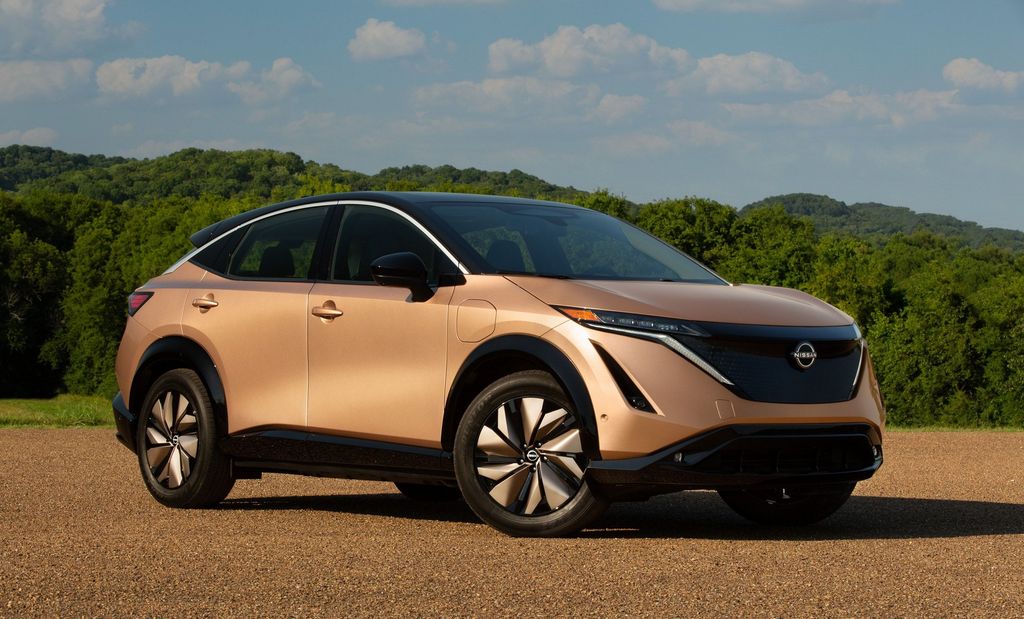
11. **Nissan Sentra: The Economical Standout**Who said economy cars couldn’t have style and substance? In 1985, the Nissan Sentra, known as the Sunny in other global markets, gracefully redefined the compact segment. It successfully merged attractive styling with an unwavering commitment to reliability, proving that sensible transportation didn’t have to be boring. These lightweight, fuel-efficient cars quickly became ubiquitous, finding homes in college campuses and first-time buyer driveways across America, becoming a trusted companion for countless drivers.
The Sentra’s boxy yet appealing styling perfectly captured the angular design language prevalent throughout the 1980s, all while ingeniously maximizing interior space for both passengers and cargo. Even in the economy class, Nissan offered touches of unexpected luxury; high-end models delighted owners with plush velour upholstery and the convenience of power windows—features that were genuinely considered upscale in 1985’s compact car landscape, adding a layer of sophistication to its practical nature.
Among the various Sentra iterations, the sport coupe versions, with their distinctive hatchback profiles, have surprisingly become particularly collectible in recent years. Their winning combination of bulletproof reliability, impressive fuel economy, and that unmistakable, period-correct 80s styling makes them an incredibly appealing entry-level classic. They’re perfect for a new generation of enthusiasts who appreciate the groundbreaking Japanese cars from this truly transformative era in automotive history, recognizing their impact and enduring charm.
Car Model Information: 2018 Nissan Sentra S
Name: Nissan Sentra
Caption: 2021 Nissan Sentra SR (B18; Canada)
Manufacturer: Nissan
Aka: Nissan Sunny
Production: 1982–present
Class: Subcompact car
Predecessor: Nissan Sunny#B310
Categories: 1990s cars, 2000s cars, 2010s cars, 2020s cars, All Wikipedia articles written in American English
Summary: The Nissan Sentra is a series of automobiles manufactured by the Japanese automaker Nissan since 1982. Since 1999, the Sentra has been categorized as a compact car, while previously it occupied the subcompact class. Until 2006, Sentra was a rebadged export version of the Japanese Nissan Sunny, but since the 2013 model year, Sentra is a rebadged export version of the Sylphy. The Sentra nameplate is not used in Japan. Many other countries in Latin America sell their versions of the Sunny as the Sentra. In Mexico, the first three generations of the Sentra were known as the Nissan Tsuru (Japanese for crane), and the B13 model was sold under that name until 2017, alongside the updated models badged as Sentra.
In North America, the Sentra currently serves as Nissan’s compact car, despite being rated as a mid-size car by the EPA due to its interior volume since the 2007 model year. While previous Sentras were subcompacts, the Sentra has grown over the years, with the Nissan Versa having replaced the Sentra in the entry-level area.
The Sentra name was created for Nissan by Ira Bachrach of NameLab, and Bachrach describes the origin as “Nissan wanted consumers to understand that it was quite safe even though it was small. The word Sentra sounds like central as well as sentry, which evokes images of safety.”
Get more information about: Nissan Sentra
Buying a high-performing used car >>>
Brand: Nissan Model: Sentra
Price: $10,650 Mileage: 78,361 mi.
So there you have it—eleven cars that started as everyday workhorses and are now revered as bona fide classics. From the reliable Chevrolet Cavalier to the groundbreaking Honda Accord, each of these vehicles tells a unique story of 1980s American life, innovation, and style. They’re more than just metal, glass, and rubber; they’re rolling monuments to a vibrant decade, reminding us that sometimes, the most ordinary things can become truly extraordinary with a little time and a lot of heart. Which one are you dreaming of adding to your own classic collection?


